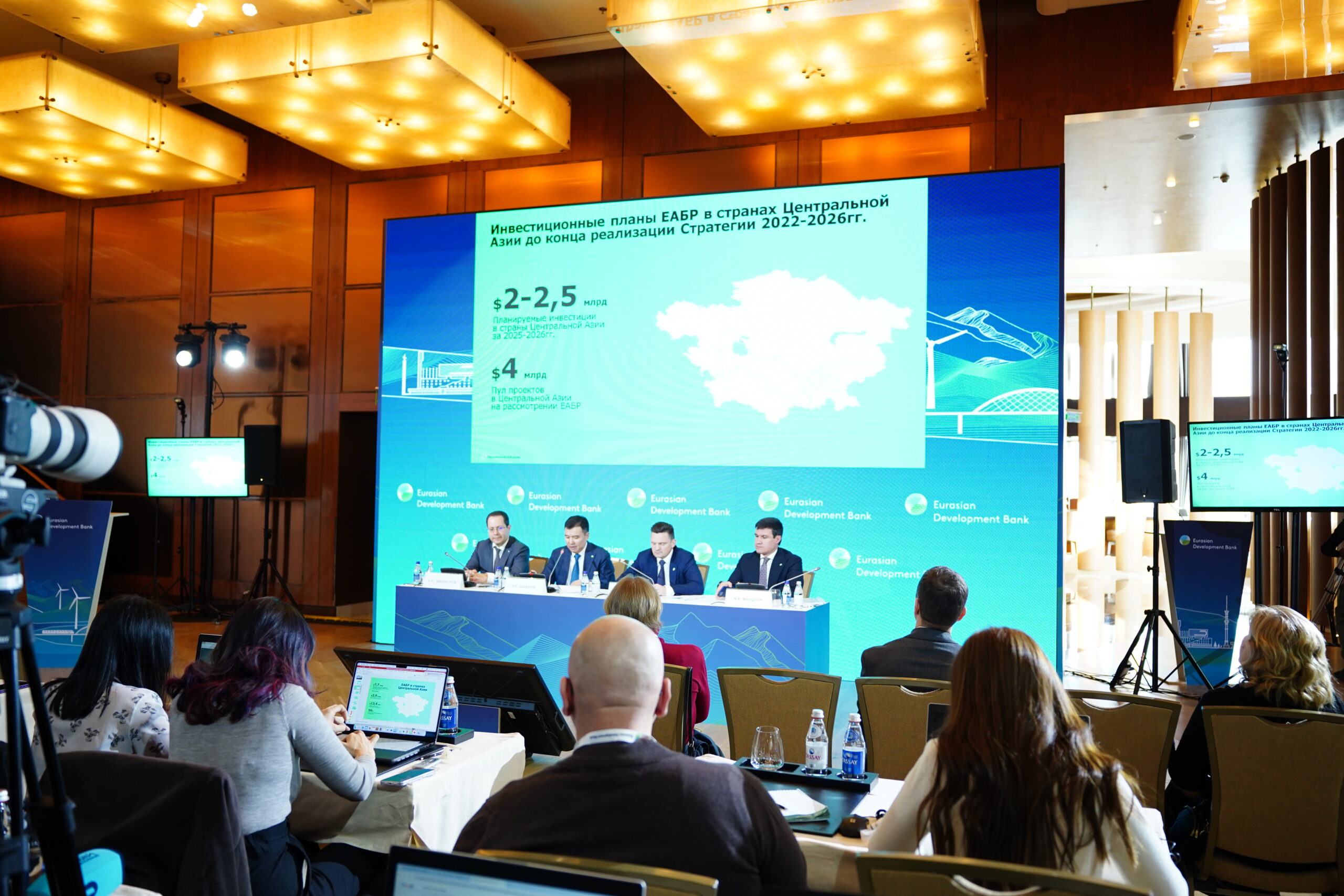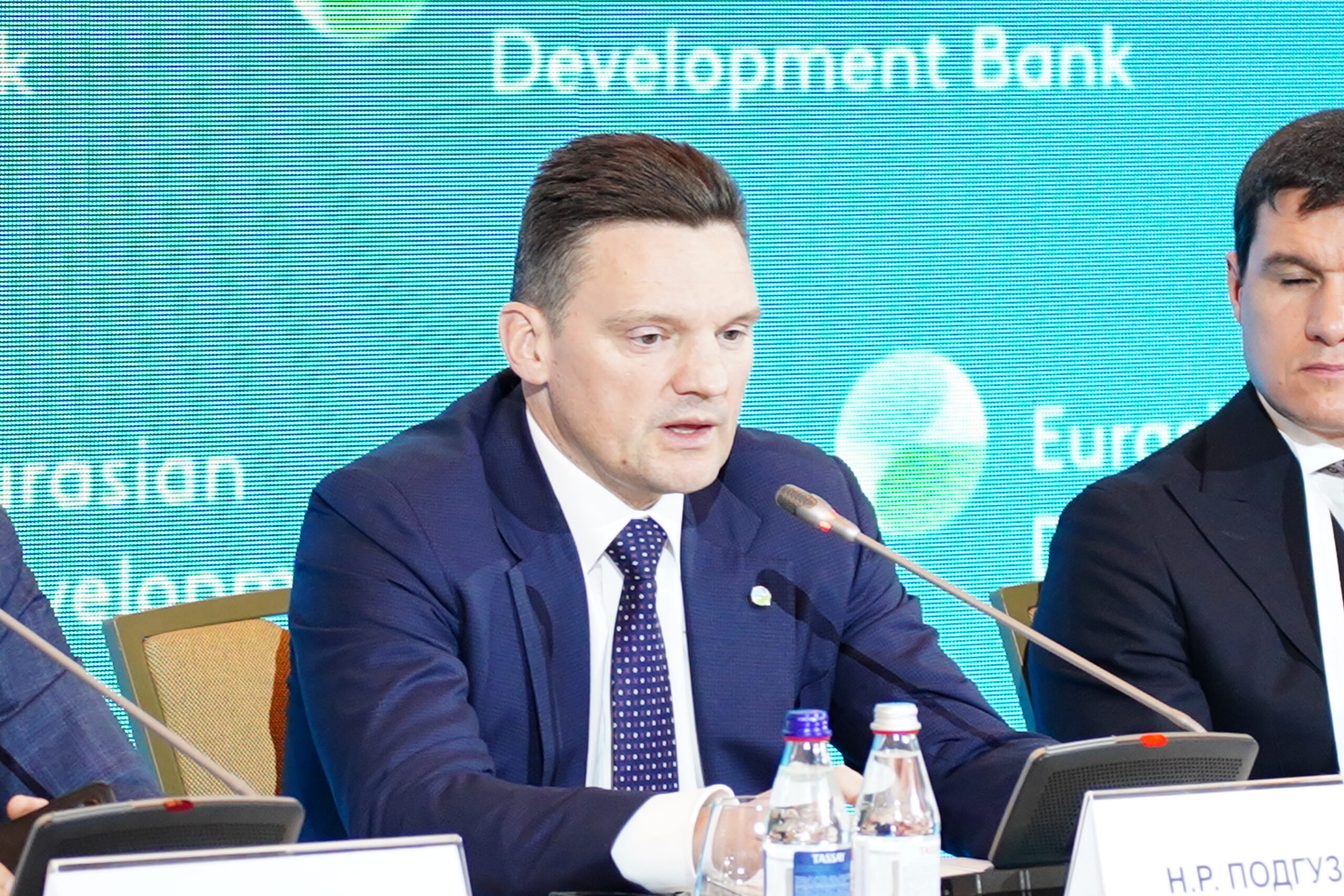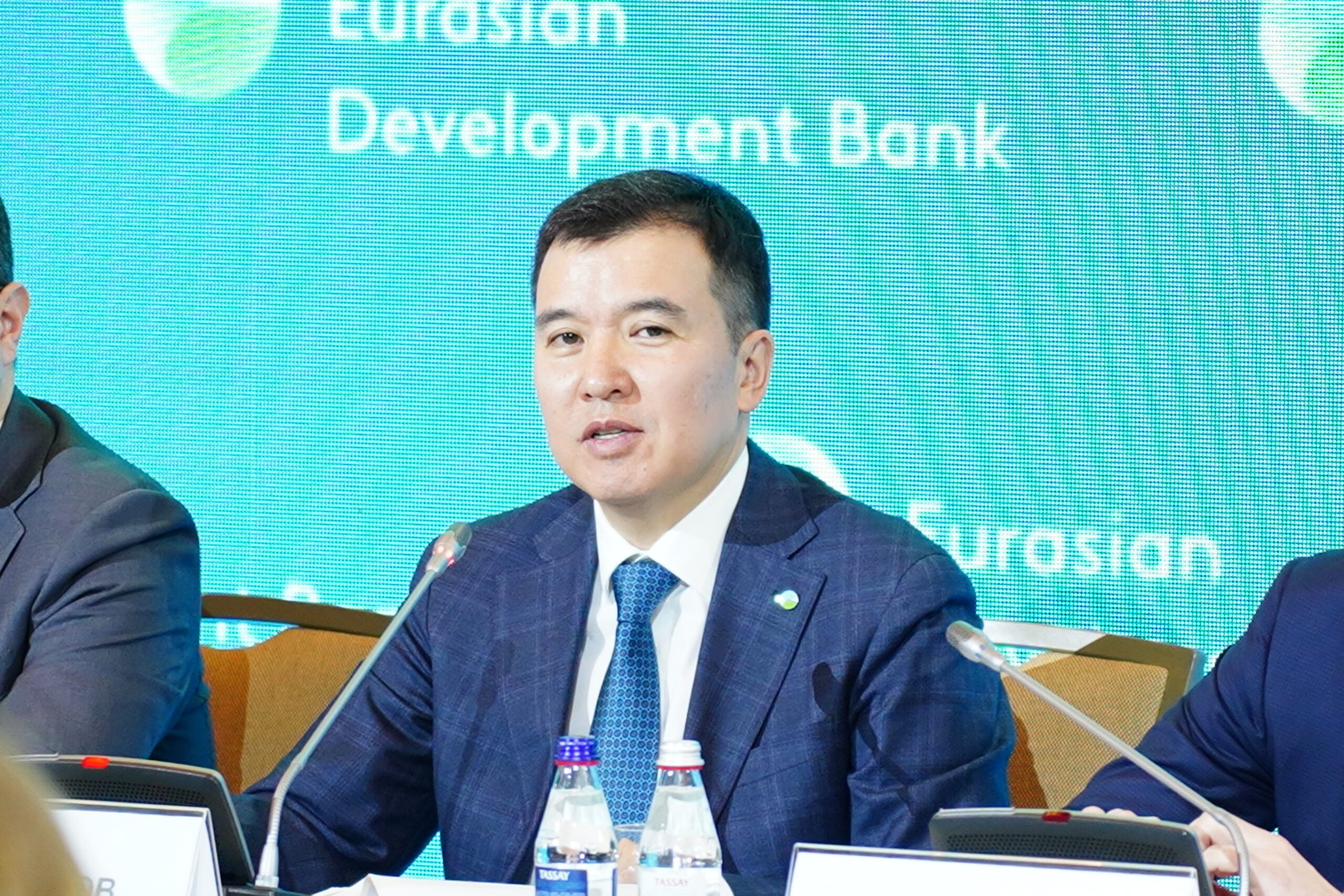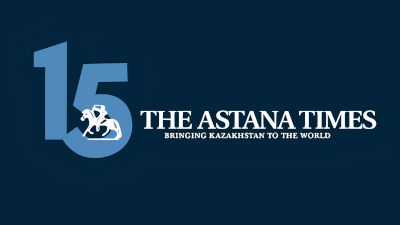ALMATY — The Eurasian Development Bank (EDB) summarized its annual results at its year-end press conference on Dec. 5, where Nikolai Podguzov, chairman of the Management Board of the EDB, highlighted key achievements.

(from left to right) Vinokurov, Chief Economist of the EDB; Dalenov, Deputy Chairman of the EDB; Podguzov, EDB Chairman; and Mandron, Deputy Chairman of the EDB on Dec. 5 Photo credit: EDB
According to Podguzov, EDB’s investment portfolio is approaching $16 billion, reflecting a 6% growth in 2024. Additionally, the bank has demonstrated strong performance in terms of returns on its funds. Over 11 months, its capital increased by approximately 9%, reaching $2.2 billion.
“This provides a strong foundation for further portfolio growth, enabling the bank to continue achieving its strategic objectives and plans. By the end of 2024, we expect to meet all established performance targets,” said Podguzov.

Podguzov emphasized that EDB leads in supporting private-sector investment projects in the Eurasian region. Photo credit: EDB
Podguzov noted that in 2024, the EDB signed around 30 new projects to support the economies of countries in the region. The total annual investment volume is expected to reach approximately $2.3 billion, making it one of the best annual results in the EDB’s history.
“We introduced country-specific strategies for the first time. Strengthening contributions to development in priority areas for each member country has become one of our key goals. These projects focus on infrastructure, green energy, agriculture, industrialization, economic diversification, and creditworthiness,” he added.
At the moment, the EDB is implementing projects in Armenia, the Kyrgyz Republic, and Tajikistan, with the portfolio for smaller member countries growing to $436 million this year—1.5 times higher than planned in the EDB’s strategy.
Podguzov emphasized that overall the EDB leads in supporting private-sector investment projects in the Eurasian region.
“During this period, the volume of sovereign financing exceeded $4.1 billion. The bank is significantly ahead of other international financial institutions operating in the region in terms of sovereign financing. By the end of the three-year strategy, the bank’s annual investment volume is expected to reach $6.5 billion, nearly 20% above the target outlined in the strategy,” Podguzov said.
He also highlighted the bank’s active role in Central Asia as an integral part of the international financial community. According to him, international development banks and organizations work together to address regional challenges in transportation, water resource management, energy, and food security.
“A prime example of such collaboration is the modernization and expansion of Almaty International Airport, made possible through our partnership with the European Bank for Reconstruction and Development and the International Finance Corporation, part of the World Bank Group. We are implementing many joint technical assistance projects and analyses to lay the groundwork for new investment initiatives,” he said.
Kazakhstan, a primary EDB recipient
Ruslan Dalenov, EDB deputy chairman, highlighted Kazakhstan as the largest recipient of EDB investments. Since 2006, $7 billion has been invested in Kazakhstan’s economy, with an additional $2.5 billion worth of projects currently under consideration. Grants worth $6 million have also been provided as technical assistance.

Dalenov highlighted Kazakhstan as the largest recipient of EDB investments. Photo credit: EDB
“The sectoral structure of these investments is stable and diversified, aligning with Kazakhstan’s economic needs and priorities. Some 29% of investments are directed toward industrial projects, 15% toward transportation, and nearly 25% toward energy, including numerous green energy projects. The agribusiness sector has received over $500 million,” Dalenov noted.
He highlighted an ongoing project of a power plant near Almaty, describing it as a significant, green, and much-needed initiative that benefits both the environment and the residents of the city.
“Special attention is also being given to green and alternative energy projects, such as solar power plants. The total capacity of these stations exceeds 550 megawatts, with facilities in regions like Akmola and Turkistan,” he added.
EDB expands the range of investment instruments
EDB is expanding its range of investment instruments and financial products. This includes the development of Islamic financing products, which provide opportunities for broader market participation.
“New investments in Central Asian countries will attract funding from Gulf, East Asian, and other markets. For businesses, this creates opportunities to finance projects using innovative tools. On an institutional level, plans include launching an Islamic finance window for Europe by mid-2025,” he said.
To achieve this, the EDB will implement internal regulations, establish a transaction approval council with international specialists, and address organizational issues like staff training and maintaining separate accounting systems.
“We have already formed a steering committee to develop Islamic financing, with support from the Islamic Development Bank group. Once operational, this initiative could bring additional annual investments of up to $1 billion to Central Asian countries,” Dalenov concluded.


